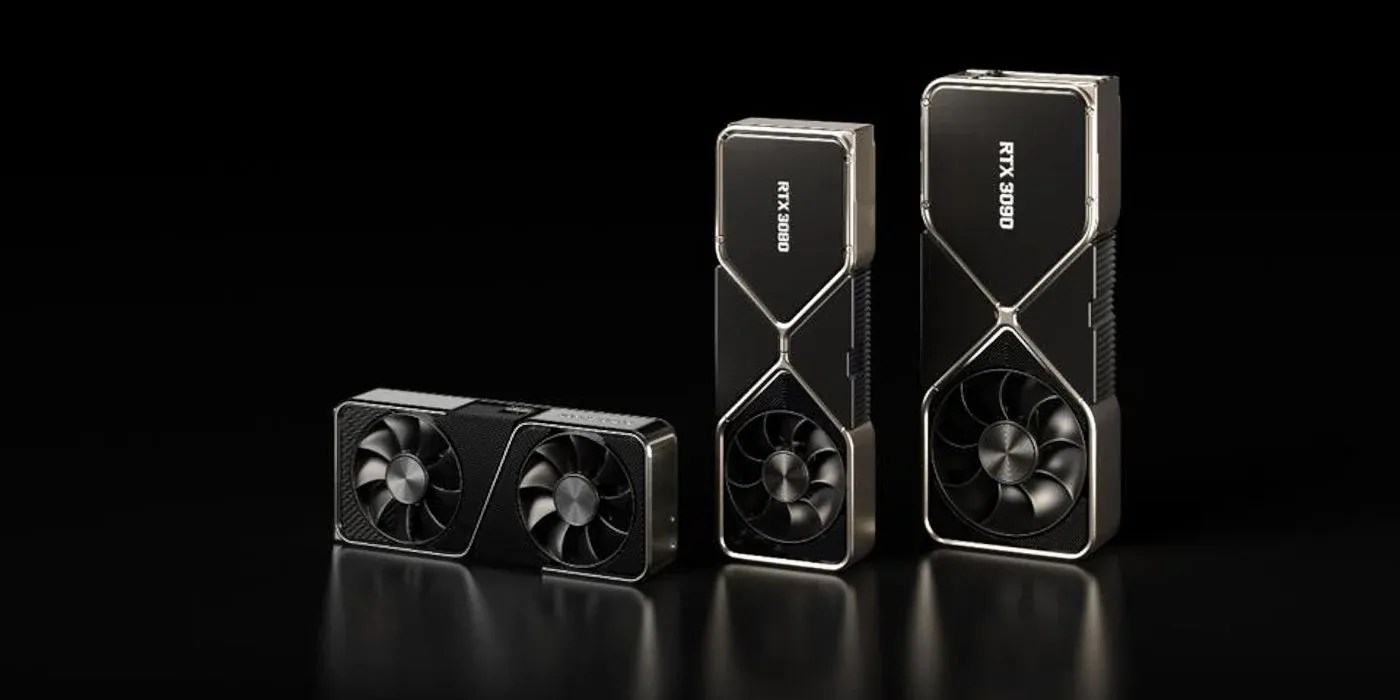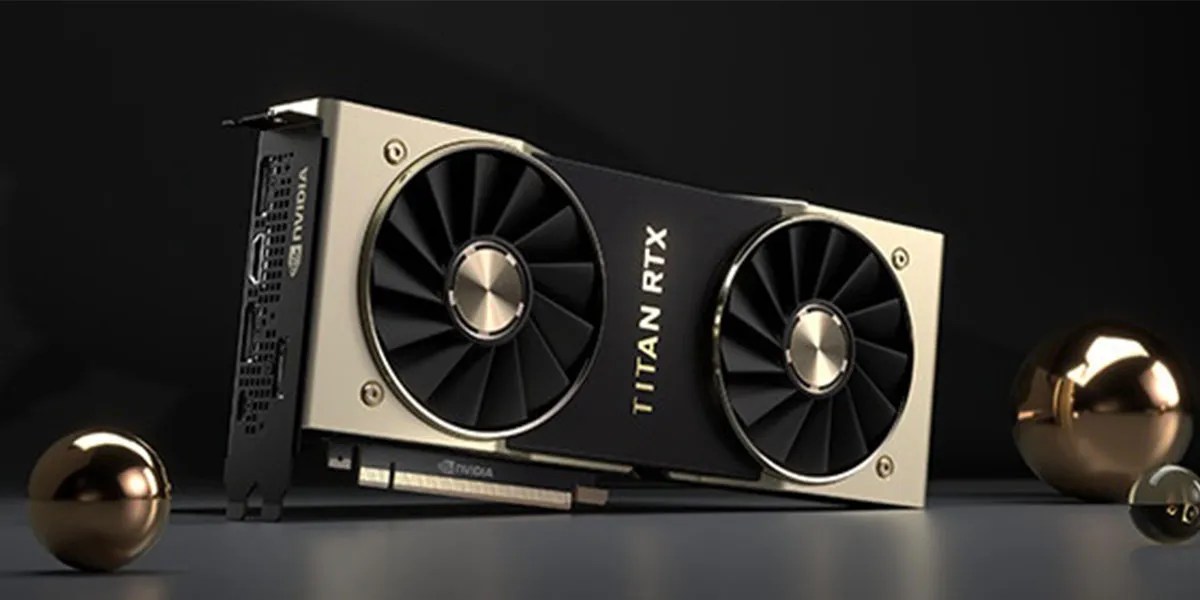Choosing a graphics card is now the most important part of building and upgrading a gaming PC, and therefore the piece of hardware that gamers spend the most money on. Yet knowing what to look for can be extremely difficult for anyone who is more interested in games than the specific technology behind them. Even for those with a good understanding of technology, navigating the many changing terms and specifications can be time-consuming.
Every gaming PC is different, the type of card that best suits it will naturally vary based on the games it will be used for. A compact PCfor playingMinecraftat 1080P resolutionwill require a very different graphics card to a full size PC aimed at playing the latest titles in 4K resolution. By bearing these requirements in mind, gamers will find it much easier to pick the right card.

RELATED:Nvidia RTX 3090 Spec Breakdown
Allocating budget
While the CPU used to be the most important part of a PC build, the rapid development of graphics technology means that the graphics card is now the most important factor for almost all games. The general rule of thumb is that between 30% to 50% of the total build cost should go towards the graphics card, while this can vary depending on price fluctuations, as long as the CPU is reasonably powered, the majority of gaming performance increases will come from adding budget here.
Top end graphics cards such as the Nvidia GeForce RTX 3090 can cost upwards of $1,499, while mid to high-end cards can range from $400 to $1000, with budget cards from $100 and up. In September 2020, Nvidia surprised many with ahigh-performance and low-price combination for the launch of its RTX 3080 and RTX 3070cards, offering a performance per dollar ratio that will be hard for other mid and high-end cards to beat.

AMD vs. Nvidia
Often referred to as Team Red and Team Green, the fierce competition between AMD and Nvidia can often spill over into gaming debates. Some gamers swear by one, some switch between the two, while others don’t care either way. In principle, the difference between the two sets of hardware is quite small, as equivalent specification cards from both manufacturers will play the same games with mostly identical settings, so the differences are in the minor details.
Certain titles are developed with one set of hardware in mind, so will perform slightly better on it, while others are designed to take advantaged of particular features offered by one manufacturer. For example,Nvidia’s RTX ray tracing for reflections and lighting, and DLSS AI-powered scaling technologies for speeding up performance at high resolutions. Gamers who are unsure which way to go are usually better to focus on finding the best price for equivalent performing cards.
Understanding model numbers
The biggest difficulty for many when buying a graphics card is figuring out what the various model numbers mean; while not as complicated as it may seem, it can still take a bit of work. By the end of 2020, both manufacturers will have launched brand-new hardware ranges: Nvidia with the GeForce RTX 30 Series andAMD with the expected name of the RX 6000 series.
In both cases, the first number refers to the generation of technology used in the card. Nvidia’s 10 Series launched in 2016 based on Pascal architecture, the 20 Series launched in 2018 based on Turing architecture, and the 30 Series will launch in 2020 based on Ampere architecture. AMD has changed naming more frequently, but looks to be moving to a more consistent naming scheme, with the 50 series that launched in 2019 being succeeded by the 60 series in 2020, if early indicators are correct.Each generation tends to have a 40-50% average performance increaseover the previous one, which is important to note.
The next number variation refers to the model of card, with higher generally meaning more powerful. Nvidia use model numbers 60, 70 and 80 for the current 20 series, resulting in the 2060, 2070, and 2080, but will add 90 for the new 30 series. AMD used 500, 600, and 700 for the 50 series, resulting in the 5500, 5600, and 5700, and it is expected to use the same scheme for the 60 series.
Although the naming is slightly different, competing models of the same time period often align in terms of performance, with AMDs RX 5700 having comparable performance to the Nvidia RTX 2070, and the RX 5600 having comparable performance to the 2060. These numbers are complicated , however, by additional labels which signify faster or revised variants of the card, namely Ti and Super for Nvidia, as well as XT for AMD.
The numbering is further complicated by other cards that use a different generation number, usually for entry-level cards. For example the Nvidia 16 series is based on the 20 Series' Turing architecture, but is less powerful than the 20 Series cards. Happily these cards still use the same numbers to distinguish models, namely the 1650 and 1660, as well as the faster Ti and Super variants. These cards are great for 1080P resolution gaming on a budget,for good 4K gaminga minimum of a RTX 2070 or RX 5700 is recommended.
Choosing a hardware brand
There are many hardware manufacturers who produce AMD and Nvidia graphics cards, ranging significantly in price. Brands such as Asus, MSI, and Gigabyte are among those known for high quality and reliable products, while brands such as Zotac, Galax, and ASRock are known for offering good products at cheaper prices. As with all technology, higher priced brands tend to offer better quality or features, but when in doubt, it always pays to research reviews by those who use the brand or specific product. Gamers need to be careful of fake graphics card brands on sites such as Wish, which are often very old cards badged to appear newer.
RELATED:Which 30-Series RTX Card Will Be The Best Bang For Your Buck?
Graphics Processor Unit (GPU)
Essentially, the GPU is the heart of the graphics card, processing the massive amounts of data that stream through it. While CPUs are made up of a few large cores, GPUs contain hundreds or thousands of smaller cores, helping it to perform the many calculations needed for gaming performance. As with a CPU, the faster the GPU runs the more data each core processes, and the more cores it has, the more calculations it can do at once. By comparison,the top-end Nvidia RTX 3090 has 10,496 cores, while the mid-range AMD RX 5500 XT has 1408.
Overclocking
Put simply, overclocking a graphics card means running the GPU and memory at a faster speed than the stock speed set by the manufacturer. Unlike CPUs, most hardware manufacturers offer graphics cards that have been overclocked during production, which eliminates the need for gamers to spend time and effort on tweaking settings. It also avoids any risk of damaging the card and other PC components.
Cards which have been overclocked will run slightly faster, are likely to be noisier as the fans need to work harder to keep them cool, and will use slightly more power, as well as being more expensive. The designation “OC” is typically used for cards which have been overclocked by the manufacturer, although the exact speeds will vary depending on the exact product and brand. For example, the AMD Radeon RX 5700 has a base clock speed of 1465MHz, but overclocked versions offer base clock speeds of between 1490MHz and 1610MHz.
Memory
As might be expected with memory, more is better, particularly when it comes to running ultra quality textures in 4K resolution. Newer entry level cards usually come with a minimum of 4 GB of memory, mid-range cards usually have 6-8 GB, high-end cards can have up to 11 GB, while the top-end Nvidia RTX 3090 will be launching with a gigantic 24 GB. 6 GB is theminimum requirement for 4K gaming.
In addition, the type of memory also has a big impact on how fast it can transfer data to the GPU. Most graphics cards utilize GDDR memory, with the latest iteration GDDR6X appearing on Nvidia’s new RTX 30 Series cards. The majority of mid and high-end cards use GDDR6, while some entry level cards use the older and slower GDDR5.
RELATED:Nvidia Details 8K DLSS Upscaling with RTX 3090
Card sizing
The size of graphics cards can vary significantly depending on the level of performance produced. Although all cards use the PCIe slot on the motherboard, most cards require more space. Some entry level and efficiency focused cards can fit into a single slot space, ideal for compact gaming PCs, while others are known as 1.5 slot cards because the cooling protrudes underneath. When it comes to mid and high-end cards, dual slot sizing is the most common, taking up the PCIe slot as well as the expansion space below, but more powerful cards can reach 2.5 or even 2.7 slot sizes.
Triple slot cards are rare, but the ultra powerful Nvidia RTX 3090 utilizes this design. The huge variations make it essential to check the sizing of the graphics card, motherboard, and PC case carefully, as even some large cases can struggle with the biggest graphics cards.
Power Requirements
Essentially, the more powerful the graphics card, the more power it requires. Some entry level graphics cards can run using just the power from the PCIe socket on the motherboard, which can provide up to 75 watts, but most will need to have a separate power connection from the Power Supply Unit (PSU). There are two main types of power cable used to connect graphics cards, 6-pin and 8-pin, which supply up to 75 and 150 watts respectively.
High-end graphics cards with big power requirements can use two 6-pin connectors, one 6-pin and one 8-pin connectors, or even two 8-pin connectors. The cables usually come attached with the PSU, and adaptors are easily available to convert them.Nvidia is introducing a smaller 12-pin connectionfor its power hungry RTX 3090 and RTX 3080 cards, which will come with an adaptor for two 8-pin connectors.
It is vital that gamers check the power requirements of graphics cards and ensure that the PSU is capable of handling the load. 600W is usually enough for most mid and high-end graphics cards, top-end cards can require a 750W PSU, while some entry level and efficiency focused cards can work with just 350W.